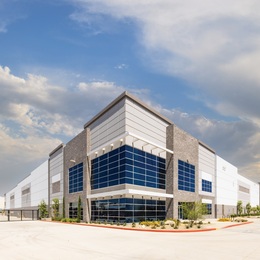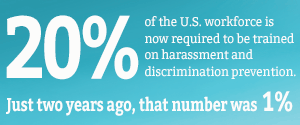
In his current role as the public and federal issues liaison for the National Association of Realtors, Nick Manis has an abundance of opportunities to travel across the country.
Manis is also a past president of New Jersey Realtors, a real-estate advocacy association he still actively serves, and can’t help but compare The Garden State to the rest of the nation.
“I’ve been going to a lot of different states, and I always say to myself ‘Man, New Jersey is good,’” he begins. “It’s a priceless location. You can get the mix of the suburban with the spillover from the benefits of being driving distance from New York, you have great infrastructure, there’s strong business markets here, you attract top talent for STEM fields, we’re strong in life sciences. The fact that we’re smack in between New York and Philly—some of the top cities in the nation—I think it’s second to none.”
And while the commercial real estate industry isn’t quite as red-hot as it was when warehouses were cropping up all across South Jersey, he says that it’s certainly positioned on more solid ground and marked by more positive indicators than it was a year ago.
“I think overall there’s a bit more optimism that the worst is behind us,” says Manis. “I don’t expect there to be some dramatic, huge, accelerated growth, I think it’s going to be more like, let’s dip our toe in the water here, it’s more stable, and now it’s going to be more like a cautious step forward.”
He further explains that our state’s advantageous location, from its proximity to the Port of New York/New Jersey—the busiest port on the East Coast—to benefiting from being so close to the likes of bustling metropolitan areas like New York City, Philadelphia and Washington, D.C., is certainly an asset that attracts not only commercial operations but also the top talent they seek to employ.
It also helps ensure that new projects are always infusing some fresh life into South Jersey’s economic landscape while helping to perpetuate a mutually beneficial cycle of growth.
“South Jersey's location close to major cities, ports and interstate highways makes it a great location for logistics,” affirms Robert Powell, vice president of business development and marketing for Vineland Construction Co. “There are numerous industrial projects underway around South Jersey. These projects create jobs and the need for housing and services to support those employees and their families. That leads to additional construction in other areas, like retail, housing and infrastructure projects around the region.”
Specific to South Jersey, there are a number of commercial construction projects both underway and in the works that justify the sense of optimism Manis noted. He points to the Camden Waterfront’s ongoing revitalization and development as one bright spot bringing the accompanying value of new hotel and office space to the region, as well as Washington Township in Gloucester County embracing the affordable housing projects that further exemplify the “chicken or the egg” relationship between residential and commercial projects working in tandem to buoy population growth. And infrastructure improvements bring their own positives to the region, as Manis says the late-2023 completion of the Missing Moves bridge project demonstrates. The Bellmawr road project, which marks the first time in the North-South Freeway’s 65 years that Route 42 and 295 are connected, promises to facilitate a more direct route among Philadelphia, Camden County and Gloucester County.
Amy Hennessey, executive director of the Employing Bricklayers Association, agrees that there’s plenty to be excited about when it comes to projects both in and benefiting South Jersey.
“Camden has a lot of things on the radar, their college institutions have a lot going on, and you still have Atlantic City that continues to try to find its identity,” she says. “There’s also a lot of restoration going on: You have to maintain and support structures to make sure that they continue to be safe, and then there’s add-ons to current structures. There’s a lot of chatter about Camden, which has a lot of old buildings to maintain and new buildings going in.”
While this year’s push for return-to-office mandates isn’t anticipated to have much of an impact on office projects, local experts agree that one area of commercial real estate well-positioned to remain in demand is mixed-use construction, which encourages the accessibility, walkability and community that many—especially younger generations seizing upon any avenue to homeownership—crave by combining retail offerings with residential options.
“There’s been an uptick in that,” Manis affirms. “People want that walkable neighborhood near a transit village, like a train station. I think that’s always been such a positive for people and it’s a good lifestyle where you don’t necessarily need a car to be able to walk outside, have the air hit your face, walk the dog, have a park for the kids, have these nice restaurants and coffee shops around you. That whole idea is a really good one.”
To arrive at any projects poised to make a positive local impact, though, takes a team of experts both scrutinizing them from all angles as they come together and considering their long-term viability, whether that means occupant safety, existing in harmony with their surroundings, or safeguarding them against the rising threats of both extreme weather and the inevitable ravages of time time. The combined talent, training, ideas and insights from not only construction and real estate professionals but also the likes of land surveyors, community advocates, engineers and architects all contribute to a successful project.
“Folks think of architecture in the same category as painting, the result of a single artist’s vision,” says Regan Young, AIA/PP, founding principal of RYEBREAD Architects. “In reality, it’s more like the film industry. As the credits at the end of a movie attest, projects of this scope are the result of scores of talented folks working together. Creating safe, productive, healthy, efficient and distinctive buildings and contexts requires complex collaborations among clients, architects, engineers, designers, code officials, trades and suppliers. Architecture is a team sport.”
“There is a balance to be struck with all new construction projects,” Powell adds. “Building projects efficiently makes them economically viable, and that's what matters most to create new jobs and tax bases for municipalities; however, there are aspects of each project that can address possible impacts to the surrounding environment. Developers work with local planning and zoning boards to discuss the project designs while NJDEP (New Jersey Department of Environmental Protection) and other state agencies make sure all boxes are checked for minimizing impact to the surrounding environment. Ideally, each project strikes that balance of creating jobs and tax revenue, while also making something that is visually appealing and a net benefit to the community. For our projects, we focus heavily on landscape design to create that harmony.”
Hennessey points out that while “the most eco-friendly building is one that already exists,” there are plenty of materials available for new builds that not only minimize their environmental impact but also ensure a sturdy structure built to withstand the region’s increasing natural threats like extreme temperatures, tornadoes and expanded flood zones, as well as address the concerns born of watching wildfires relentlessly level all manners of structures and the sobering reality those insatiable flames brought into stark clarity.
“People have blinders on when it comes to that [construction’s] impact and, honestly, I think the Los Angeles fires made a lot of people think,” she notes. “Our climate is different, of course, than LA’s, but that impacted a lot of people to think of their structures differently. We build with brick, stone and CMU (concrete masonry unit) block, which are safer for the first responders, they’re safer for the occupants all around. A lot of our marketing is focused on the benefits of those materials: they’re impact-resistance, noncombustible, there’s no chemicals in them. So if they burn—which is part of the issue out in LA right now—there’s no chemicals from fire-retardant materials being released into the air.”
Of course, with a new presidential administration comes the potential for a new playbook amid rapidly changing and fluid guidelines, operations and priorities that could create all new ripple-effect issues for an industry embracing cautious optimism.
“If last month’s executive orders are enforced, the American construction industry will soon be jettisoning not only sustainability, resilience and equity, but also Modernism itself, as the federal government adopts Classicism as its official architectural style,” Young notes. “Meanwhile, lots of professionals and contractors—as well as civil servants—may go unpaid. If enacted, tariffs are going to impact not just future construction contacts, but also those already awarded. And mass deportations would exasperate labor shortages in our industry, and others.”
But on a local level, nationally proposed legislation like HR-9002/SR-4693 underscore the optimism that Manis says 2025 arrived with. The bill, named the Revitalizing Downtowns and Main Streets Act, would revitalize those areas of commerce “by converting underutilized office space into residential space,” with the aim of bringing more living spaces to the market. That, in turn, would hopefully facilitate an infusion of local vitality kick-starting the cyclical economic engine of supporting local businesses that contribute to the fabric of the neighborhoods and communities they call home.
Regardless of how the rest of the year unfolds, Manis says there’s plenty of indicators that 2025 is in a good place to build on the optimism it began with.
“You’ll slowly see construction projects coming back,” he predicts. ”Interest rates are still holding a bit high so that’s obviously not that great, but inflation has been kind of tamed. … Tariffs may change that but at this point, it’s more settled—and obviously businesses and developers and users like seeing more stability.”
Click here to subscribe to the free digital editions of South Jersey Biz.
To read the digital edition of South Jersey Biz, click here.
Published (and copyrighted) in South Jersey Biz, Volume 15, Issue 2 (February 2025).
For more info on South Jersey Biz, click here.
To subscribe to South Jersey Biz, click here.
To advertise in South Jersey Biz, click here.








